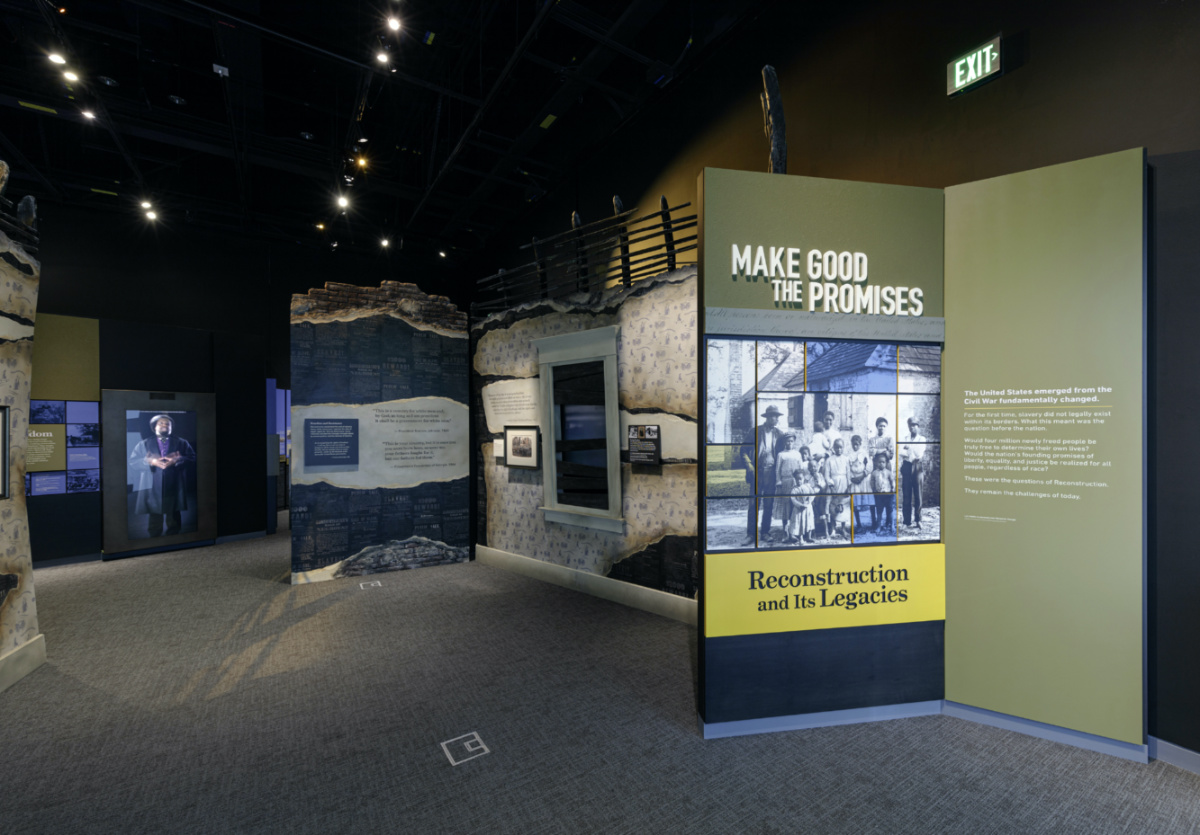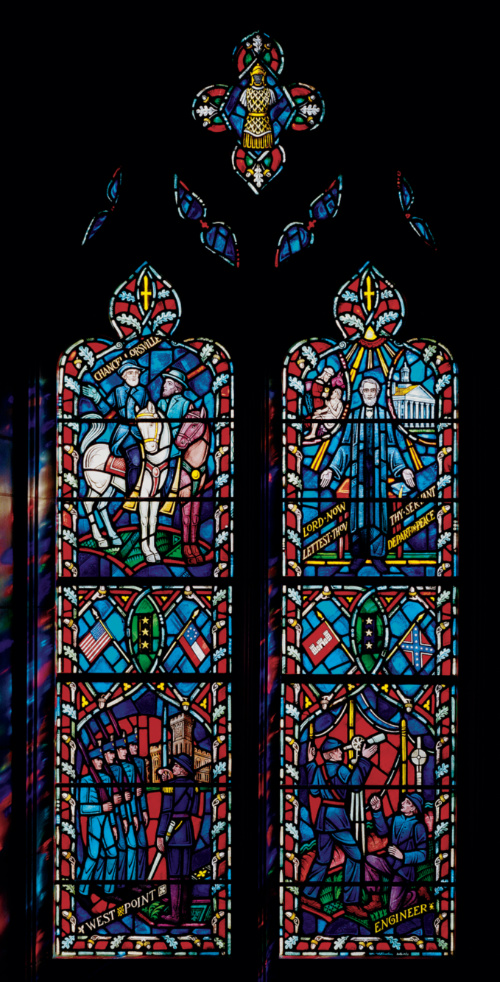The pew from a church where Black people once were relegated to the balcony. A pair of stained-glass windows honoring Confederate generals that were removed from Washington National Cathedral. A Bible used during the study session at Mother Emanuel African Methodist Episcopal Church on the night when nine people were killed.
These and other religious artifacts are among the 175 objects featured in a new exhibition on the Reconstruction period, the time after US slavery had recently been outlawed, at the National Museum of African American History and Culture in Washington. The exhibition, titled “Make Good the Promises: Reconstruction and Its Legacies,” opens on Friday on the museum’s fifth anniversary.

The exhibition “Make Good the Promises: Reconstruction and Its Legacies” opens 24th September at the National Museum of African American History and Culture in Washington. Photo by Josh Weilepp/NMAAHC
Curators and other museum experts said those artifacts demonstrate the resilience of African Americans in those times – when more than four million people moved from slavery to freedom – and underline the lingering racism that continues in America.
NMAAHC Director Kevin Young, speaking during a virtual news conference Wednesday, said the museum was grateful to receive artifacts belonging to a survivor as well as to someone killed in the 2015 massacre at the AME church in Charleston, South Carolina.
“It’s really powerful to see the parable of the sower being one of the things being taught that day, to see the Bible with the page folded down,” he said, of an item that is on loan for the exhibition. “I think that’s a reminder of this legacy, but also religion as both a balm but also as a site of, unfortunately, this conflict in this moment.”

For over a century, the Washington National Cathedral has played a prominent role in the nation’s spiritual and political life. In 2017, the Cathedral removed stained-glass windows depicting Confederate generals Robert E Lee and Stonewall Jackson that had been installed in 1953. The decision by the Cathedral chapter was prompted by the massacre at Emanuel AME Church in Charleston, South Carolina, and the Unite the Right rally in Charlottesville, Virginia, events that drew national attention to the embrace of Confederate symbols by white supremacists. The United Daughters of the Confederacy paid for this stained- glass window honouring General Robert E Lee, along with a plaque describing him as “a Christian soldier without fear and without reproach”. The Lee window was installed in 1953 next to another dedicated to General Stonewall Jackson. The upper left panel depicts the two men at the Battle of Chancellorsville, a Confederate victory in the Civil War. PICTURE: Ken Cobb/© Washington National Cathedral.
After the massacre, leaders of the National Cathedral decided to remove stained-glass windows depicting Confederate generals Stonewall Jackson and Robert E Lee. The Lee window is now on loan from the cathedral in the new exhibition.
The United Daughters of the Confederacy paid for the 1953 window honouring Lee, including a plaque that described him as “a Christian soldier without fear and without reproach”.
The cathedral is scheduled to hold an event Thursday during which it will announce plans for replacements for the windows, which will be designed by a “world-renown artist” and be installed above stonework inscribed with words by a poet who is a Pulitzer Prize finalist.
Spencer Crew, the museum’s emeritus director, said the balcony pew, which is on loan from The Charleston Museum, tells a story of change that occurred during Reconstruction in a church on Edisto Island, South Carolina.
“It says an awful lot,” he said. “That was in the balcony, where the enslaved had to sit and listen to sermons, sermons that probably told them to be good servants, to obey their masters.”
The segregated seating continued until the Civil War. When US troops arrived, white church members left and the newly freed Black congregants were able to worship on the main floor. But white members returned in 1866 to reclaim the building. The African American worshippers departed and started their own church.
“I think it speaks to the importance of independence,” Crew added. “It speaks to the importance of controlling your own institutions and that you can then create strategies that make sense to you and not controlled by others.”
The exhibition explores themes of religious freedom and changes in economic and political power even as racial violence, including lynchings, terrorised formerly enslaved people.
The religious artifacts curators collected exemplify these long-standing themes, said NMAAHC project director Paul Gardullo.
“Because the church is an engine of so much, civically and spiritually and educationally, it’s recognised as a target,” he said. “So it’s a sanctuary, but it’s also imperiled. And the forces of racism understand that.”
Corrections: The story has been corrected to say that the Lee window alone is now on loan from the cathedral and that the poet mentioned is a Pulitzer Prize finalist, not a winner.






